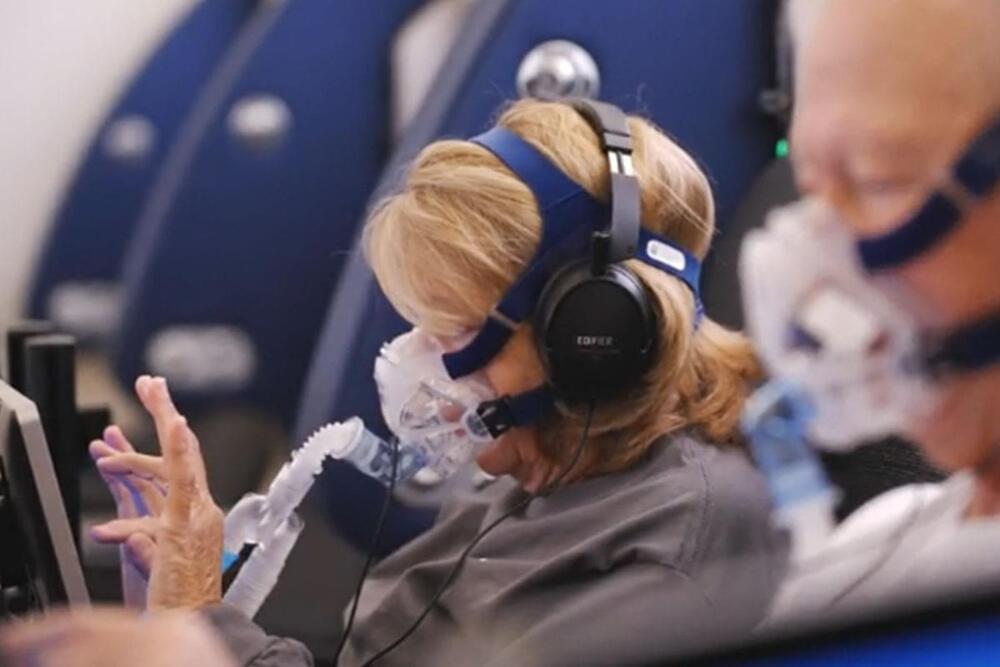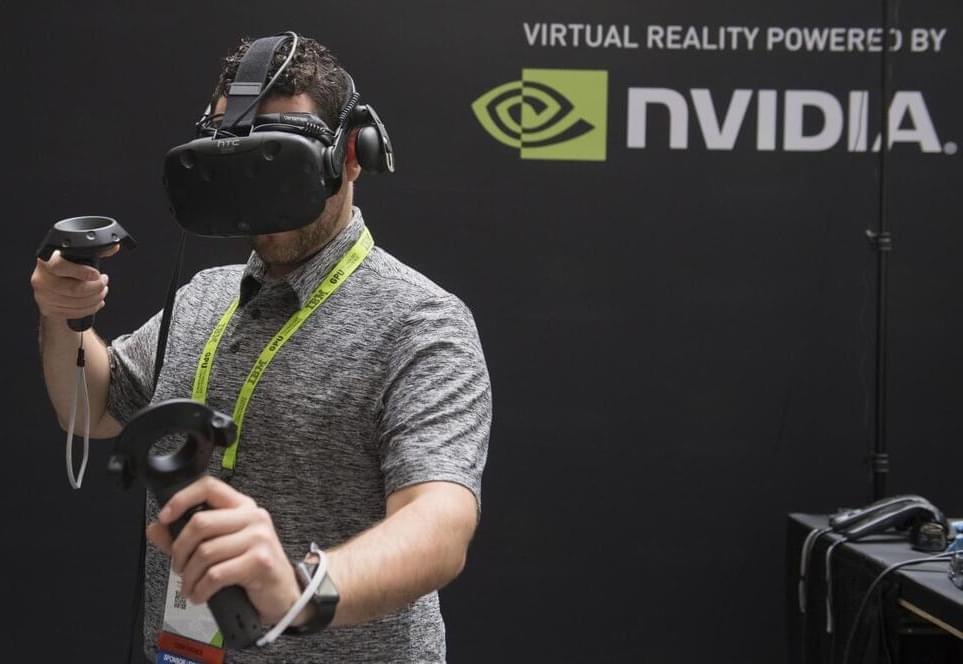Experts at Berkeley Lab finished winding more than 2000 kilometers of superconducting wire into cables for new magnets that will help upgrade the Large Hadron Collider and the search for new physics.
Get the latest international news and world events from around the world.

The evolution of AAVs in cell and gene therapy
AAV development for cell and gene therapy in 2023 is being impacted by manufacturing and regulation challenges, however advancing technologies offer opportunity, according to leaders in the field.
As proven by recent regulatory approvals sweeping the cell and gene therapy industry, particularly within Europe and the US, these pioneering treatments have demonstrated great capacity in helping to resolve hard-to-treat diseases.


Navigating The Biases In LLM Generative AI: A Guide To Responsible Implementation
The adoption of artificial intelligence (AI) and generative AI, such as ChatGPT, is becoming increasingly widespread. The impact of generative AI is predicted to be significant, offering efficiency and productivity enhancements across industries. However, as we enter a new phase in the technology’s lifecycle, it’s crucial to understand its limitations before fully integrating it into corporate tech stacks.
Large language model (LLM) generative AI, a powerful tool for content creation, holds transformative potential. But beneath its capabilities lies a critical concern: the potential biases ingrained within these AI systems. Addressing these biases is paramount to the responsible and equitable implementation of LLM-based technologies.
Prudent utilization of LLM generative AI demands an understanding of potential biases. Here are several biases that can emerge during the training and deployment of generative AI systems.

Unlocking Brainpower: How Neuroscience Transforms Employee Potential into Peak Performance
Lack of skills and training is a big issue. Some employees may simply not have the necessary skills or training to perform their tasks effectively. Investing in employee development can improve performance and solve lots of heartaches. Let us share Jenny’s story: Why Jenny’s Promotion Changed the Way We View Training: A Dive into Neuroscience “Guess who got the promotion?” Jenny burst in one Monday morning, her face beaming with a mix of surprise and elation. Most of us knew Jenny from her early days—an employee with lots of enthusiasm but, frankly, a bit lost in the intricacies of the industry.

Hyperbaric oxygen therapy — a patient’s perspective
Recently, we spoke to Shai Efrati MD, Chair of Aviv Clinics’ Medical Advisory Board and Founder and Director of the world-leading Sagol Center for Hyperbaric Medicine and Research, about the longevity and healthspan benefits of hyperbaric oxygen therapy (HBOT). The Aviv Medical Program is designed for individuals experiencing cognitive and physical decline because of a variety of conditions, including stroke, post-COVID and age-related cognitive decline, Aviv also has an increasing number of clients who wish to improve their cognitive and physical performance and increase their healthspan.
One of Aviv’s patients is Patti Finnegan, a senior living in The Villages in Florida, and we sat down with her to find out what HBOT entails for the patient.
Longevity. Technology: At Longevity. Technology, we often cover therapies and treatments that have been developed or launched, discussing the science behind them and the possible results for the patient. What is less common, however, is to hear from the patients themselves – how did they find the experience and has it made a difference? What starts in a test tube or a white board ends up in a person, so it is important to retain a focus on the end user; after all, while patient population data is important, improving outcomes for actual people is the key goal behind longevity science – real people living longer, healthier lives.
I’ve Got A Big Problem In My Oral Microbiome (Serratia marcescens), But Also A Plan To Reduce It
Join us on Patreon! https://www.patreon.com/MichaelLustgartenPhD
Discount Links:
Oral Microbiome: https://www.bristlehealth.com/?ref=michaellustgarten.
Enter Code: ConquerAging.
At-Home Metabolomics: https://www.iollo.com?ref=michael-lustgarten.
Use Code: CONQUERAGING At Checkout.
NAD+ Quantification: https://www.jinfiniti.com/intracellular-nad-test/
Use Code: ConquerAging At Checkout.
Epigenetic Testing: https://trudiagnostic.com/?irclickid=U-s3Ii2r7xyIU-LSYLyQdQ6…M0&irgwc=1
Use Code: CONQUERAGING
At-Home Blood Testing (SiPhox Health): https://getquantify.io/mlustgarten.


The AI market will be worth $600 billion, Nvidia exec says
At the Goldman Sachs Communacopia and Tech Conference, tech execs pointed to why AI has rightfully gained so much attention on Wall Street.
Speaking to a standing-room-only crowd at the Goldman Sachs Communacopia and Tech Conference.
According to Das, the total addressable market for AI will consist of $300 billion in chips and systems, $150 billion in generative AI software, and $150 billion in omniverse enterprise software. These figures represent growth over the “long term,” Das said, though he did not specify a target date.
According to Nvidia, $600 billion is tied to a major bet on accelerated computing.

Experts alone can’t handle AI — social scientists explain why the public needs a seat at the table
Are democratic societies ready for a future in which AI algorithmically assigns limited supplies of respirators or hospital beds during pandemics? Or one in which AI fuels an arms race between disinformation creation and detection? Or sways court decisions with amicus briefs written to mimic the rhetorical and argumentative styles of Supreme Court justices?
Decades of research show that most democratic societies struggle to hold nuanced debates about new technologies. These discussions need to be informed not only by the best available science but also the numerous ethical, regulatory and social considerations of their use. Difficult dilemmas posed by artificial intelligence are already… More.
Even AI experts are uneasy about how unprepared societies are for moving forward with the technology in a responsible fashion. We study the public and political aspects of emerging science. In 2022, our research group at the University of Wisconsin-Madison interviewed almost 2,200 researchers who had published on the topic of AI. Nine in 10 (90.3%) predicted that there will be unintended consequences of AI applications, and three in four (75.9%) did not think that society is prepared for the potential effects of AI applications.
Who gets a say on AI?
Industry leaders, policymakers and academics have been slow to adjust to the rapid onset of powerful AI technologies. In 2017, researchers and scholars met in Pacific Grove for another small expert-only meeting, this time to outline principles for future AI research. Senator Chuck Schumer plans to hold the first of a series of AI Insight Forums on Sept. 13, 2023, to help Beltway policymakers think through AI risks with tech leaders like Meta’s Mark Zuckerberg and X’s Elon Musk.